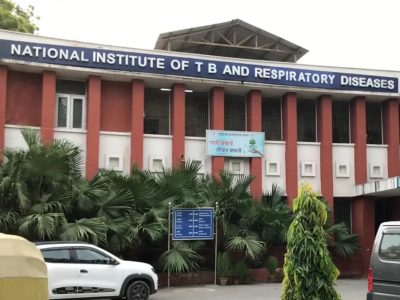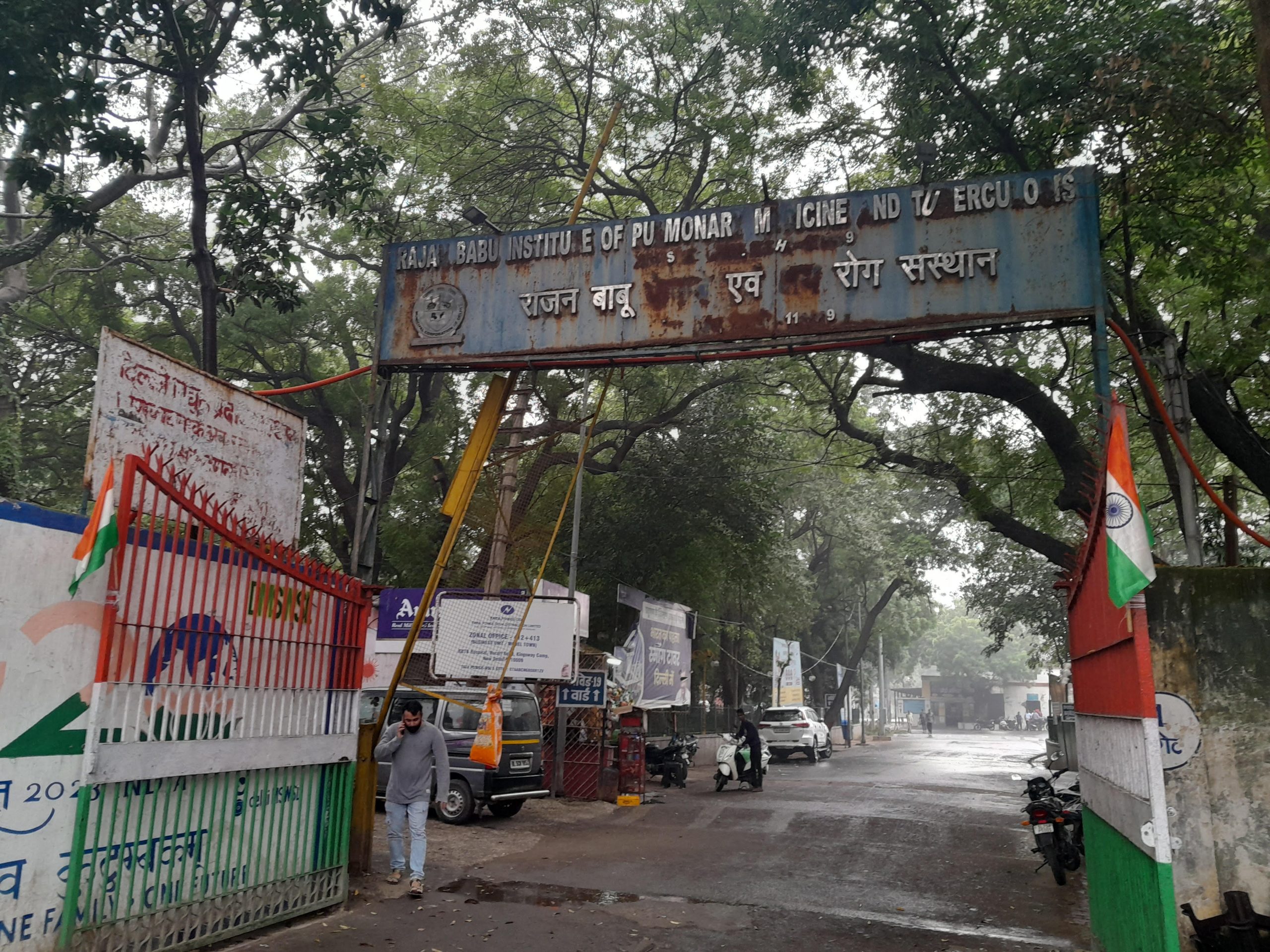In 1962, India launched the ‘National TB Control Programme’ with the aim to detect and treat cases of tuberculosis at the earliest. But even after six decades, India remains the worst TB-affected country in the world, according to a report released on November 7.
According to the latest TB Report 2023 by the World Health Organisation (WHO), India has the highest burden of tuberculosis cases in the world. The report said India has 27% of the total TB cases in the world, which is over one lakh per year.
India’s Ministry of Health and Family Welfare also recently said that 2022 had seen a record-high notification of 24.2 lakh tuberculosis cases.
In light of this, Patriot visited TB hospitals in the national capital to find out more about the rise and prevention of the disease.
At first glance, the National Institute of TB and Respiratory Diseases in Mehrauli, an autonomous institute under the Union Ministry of Health and Family Welfare and one of the best hospitals for the disease, looks clean with the basic facilities for patients, including sanitation.
A senior resident doctor, who showed the critical parts of the hospital, said on the condition of anonymity, “In TB, Lymphonate cases are increasing. In adults, lung-related TB cases are high. In children, extra-pulmonary (except lung) cases arise. In this hospital, there are 12 wards, including children, and a total of around 100 doctors, including junior residents, are currently working here.”
Robotic surgery
“For diagnosis, all equipment is available here, and for the last six months, we have also started robotic surgery for TB patients. At the same time, we use a new technique in which we enter a camera into the lungs and check the spread of the disease. Moreover, this is the only hospital that has separate wards for TB and other respiratory patients,” he said.
“Here, we also provide three meals to the patients. All facilities are completely free at only Rs 10 registration fee. In the current phase of heightened air pollution, other respiratory diseases are increasing.”
On the issue of hygiene, the doctor said, “The former director of this hospital, Dr Rohit Sarin, [who currently represents India at the WHO] started the cleanliness initiative here. We are also running an awareness programme in slum areas. To prevent TB, those who keep pets, including dogs and pigeons, should also take extra precautions because their skin could be the cause of the infection.”
A patient whom Patriot spoke to said they were satisfied with the treatment at the hospital.
“My 33-year-old sister is suffering from lung TB. The treatment here has been going on for around a year. She feels some relief at the hospital. She is worse off in winter when she has a problem even touching water,” a patient’s relative, who came from Ghaziabad, said.
The mother of a 23-year-old patient from Bulandshahr who has been admitted here for the past two months said, “He has a persistent cough. We have been disturbed for the last three to four years due to this. We visited many hospitals for treatment, but there was no improvement in his condition. Here, they have advised him to be discharged, but I’m against it.
Every year, on March 24, World Tuberculosis Day is observed to spread awareness about the disease. The theme for 2023 was: Yes! We can end TB!
Director of NITRD Dr Dewan told Patriot, “The efforts to eliminate TB are ongoing. The total cases of TB in India are around 25-26 lakh, around 12% of which turn fatal. According to last year’s report, there are around 1 crore TB patients worldwide, of which 27% are in India.”
“However, the WHO also said that India has reduced cases of TB by 16% and mortality by around 20% in the last few years. So, we are successful. But the pace of progress is slow as the caseload is huge.”
Technological advance
“The latest advancement in the treatment at the hospital has come through molecular diagnosis made possible by a machine donated by the Bill Gates Foundation. Using it, we can identify patients suffering from TB early on and can start their treatment and necessary medicine. So, this facility is helpful for better and early diagnosis,” Dr Dewan said.
“We also use robots for surgeries now through the help extended by the government. Also, now we are reaching more and more people because the programme has intensified. Earlier, we were unable to diagnose 16-17% of the TB cases. This has shrunk to about 10% now. So we can say that the penetration of the programme is getting better,” Dr Dewan added.
“If anyone has a persistent fever or cough for over two weeks, they should get themselves tested. Due to heavy crowds in public transport such as buses and trains, the chance of TB infection is much higher.”
“A patient of TB should be completely treated. The guidelines remain the same as they did during the outbreak of Covid-19 — wear masks, sanitise hands, avoid spitting in public, etc. Also, they should take a proper and hygienic diet, otherwise TB could make a comeback,” Dr Dewan.
Govt scheme for TB patients
“The government provides Rs 500 per month to every TB patient through the Diksha portal for diet by Niskhay Poshan Yojana. Apart from this, Lakshya Mitra Yojana is a scheme where people can provide food baskets to TB patients every month. Other schemes are also underway,” he said.
In 2018, the Central government started the ‘Niskhay Poshan Yojana’, which enabled the Direct Benefit Transfer (DBT) of Rs 500 to the Aadhar-linked bank accounts of TB patients.
“For cleanliness, we, including the former director, made a big effort. Sanitation is a culture here. All employees are involved in it. We also organise awareness and appreciation programmes and march for cleanliness. In fact, I visit different parts of the health facility every day to check for signs of slackness,” he said.
“New research and vaccines on TB work is underway. Society should make a collective effort to eliminate it as the UK and other countries have done,” the doctor concluded.
Rajan Babu TB Hospital in GTB Nagar
Located in GTB Nagar, the Rajan Babu TB Hospital is Asia’s biggest TB hospital, run by the Municipal Corporation of Delhi, where hundreds of patients come daily to the OPD. Compared with the NITRD Mehrauli, the facilities here do not seem as spic and span. Water is not properly available at the hospital. The ICU building is in a vulnerable state. The plaster was flaking at places and the roof was also not in good shape.

The patients whom Patriot met were also not happy with the process of treatment, with some complaining about the behaviour of some of the doctors. There was no proper sitting arrangement outside the doctor’s chambers.
“We have only been roaming around for the past six to seven days. Even the doctors don’t listen to our problems carefully. They also maintain a distance during the consultations,” said a girl who came with her elder sister, who is suffering from the disease, from Jahangirpuri.
She, along with dozens of patients, was waiting outside the doctor’s chambers. The patients were sitting on the floor.
“This is our third trip to the hospital, but there has been no development. Even today, we reached around 9:30 am. My sister is in a serious condition and is unable to walk. She is suffering from Multidrug-resistant TB (MDR-TB).”
“We have lived in Jahangirpuri for more than two decades, but still questions are being asked about the proof of residence,” the girl, who is originally from Bihar, said.
Some more patients also complained about the process of X-ray. One woman reported being very happy with the behaviour of the doctors.
Dr Ngilang Taley, District TB Officer and OPD in-charge, told Patriot, “The cases of TB are constantly rising. We are unable to count the cases of increase and decrease because patients from neighbouring states also come here for treatment.”
“The government’s target is to eliminate TB by 2025, but we see active initiatives only on March 24 (World TB Day). The DOTS programme started in 1998 where doctors ensure that patients are taking medicine properly and provide an uninterrupted supply of drugs to them. Otherwise, the chance of failure is high. A centre of diagnosis should be available for every 1 lakh people. In 2018, after NTEP (National TB Elimination Programme), not only the government, but private hospitals are also involved in this mission,” he said further.
When asked about the Ram Babu Hospital’s facilities, Dr Taley said, “Earlier, there were 1155 beds, which have been reduced to 750 because some wards were underutilised and old. In OPD, 400-700 patients come daily. Actually, we want to try to only control TB because it’s very tough to completely eliminate it. This is a specialist referral TB hospital. Only if anyone is unable to get proper treatment are they referred here.”
About the technique and equipment used, Dr Taley said, “There is nothing special. We don’t use the robot technique for everyone. Currently, we are trying to deal with it with the help of private hospitals and NGOs, among others. Only after 2025, will we be able to study the results of the efforts we are making now.”





